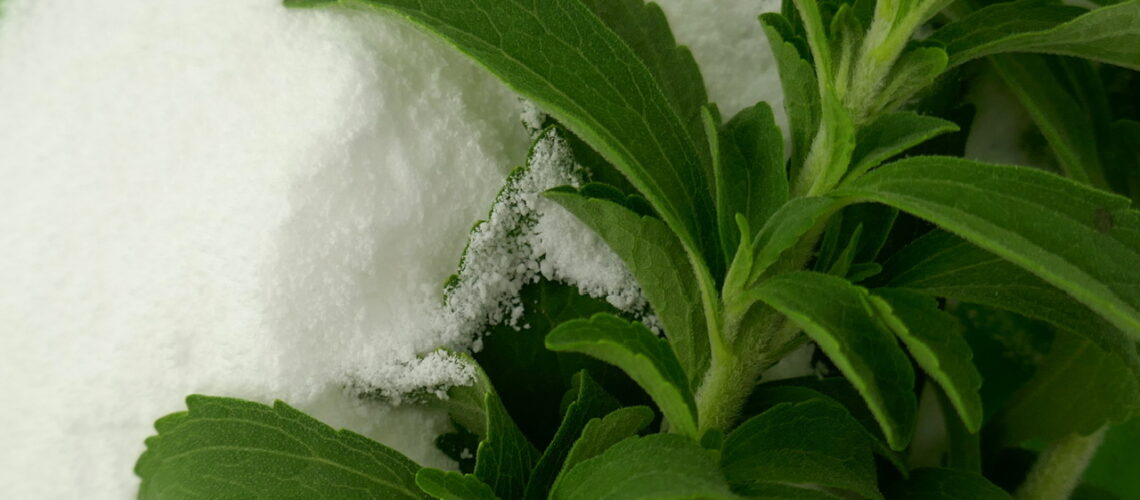Sweet Stevia

Provided courtesy, Rainbow Foods
Stevia is a natural alternative to sugar and artificial sweeteners. It has no calories, does not raise blood sugars and is suitable for candida sufferers. Stevia also reduces cavities by retarding the growth of plaque and it promotes a healthy digestive tract. Stevia is therefore an ideal sweetener for children, adults, seniors, diabetics and people suffering from yeast overgrowth.
Stevia rebaudiana is a member of the chrysanthemum family. It has a long history of use in Brazil, Paraguay and Argentina. The Guarani Indians, for example, used stevia long before the Spanish conquistadors arrived on its shores in the 16th century. Today, stevia is grown and used in as many as 10 countries outside of South America, including Canada, China, Germany and Japan since the 1970s after ample scientific testing found it to be a safe, natural sweetener. Today in Japan, stevia is consumed as a table-top sweetener, and included in a variety of foods such as breads, pickles and chewing gums.
Stevia’s potency depends on the refining process. The finely powdered stevia leaves have a green colour and a more pronounced licorice taste than the more refined white powder, but is less potent. The green pulverized leaves can be used in a wide variety of foods and beverages. The form in which stevia is used primarily in Japan is a white powdered extract; this form of stevia is approximately 200 to 300 times sweeter than sugar.
Before you start using stevia remember its sweetness. One cup of sugar is equivalent to one teaspoon of stevia powder! Excessive amounts of stevia can lead to over-sweetness and an aftertaste. If you find it difficult to achieve the right amount of sweetness when sweetening drinks and teas with stevia powder, a liquid extract might be easier. Stevia can be used in a variety of recipes including baking and hot dishes. Baked goods sweetened solely with stevia however, do not brown as well, so use a toothpick to check for doneness. You can also use stevia to cut the amount of sugar, honey or maple syrup used.
For more information and lots of recipes, check out the “Cooking With Stevia” home page.
| Sugar | White Powdered Stevia Extract * |
|---|---|
| 1 cup | 1 level teaspoon |
| 1 Tablespoon | 1/4 teaspoon |
| 1 teaspoon | a pinch ** |
* Amount may vary with different brands.
** For small amounts it is advisable to use stevia liquid. To make stevia liquid dissolve 1 tsp of powder in 3 Tbsp of filtered water. Pour the solution in a dropper-style bottle and refrigerate.
Editor’s note – You can find pre-made stevia in most health food stores either flavoured or unflavoured. You can also find stevia tablets which are great for travel and for easily adding a touch of sweetness to drinks.
References:
- Arent, Fox, Kintner, Plotkin, and Kahn, GRAS petition to the FDA on behalf of the American Herbal Products Association, 18, Apr 23, 1992
- Bonvie L., Bonvie B., Gates D., The Stevia Story, 1997:B.E.D. Publications Co. Atlanta GA
- Sahelian R., Gates D., The Stevia Cookbook, 1999: Garden City Park NY
This article was originally published in the Rainbow Foods Newsletter, Volume 1, Issue 4. Reprinted with permission from Rainbow Natural Foods. Rainbow Foods was purchased by Natural Food Pantry in November 2020. The location closed in June 2024, but there are five other Natural Food Pantry locations.
Above feature photo by yul38885 / Shutterstock.com.
No Comments